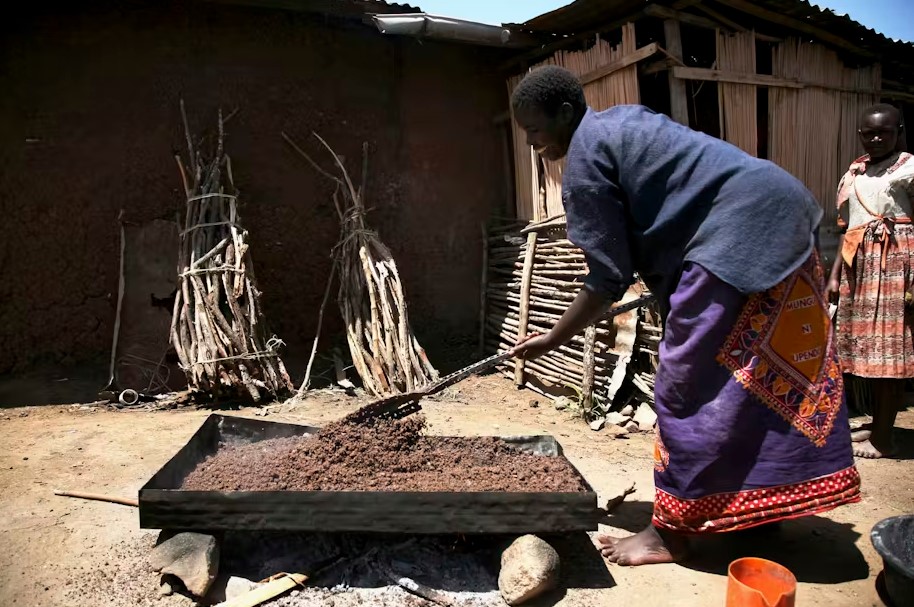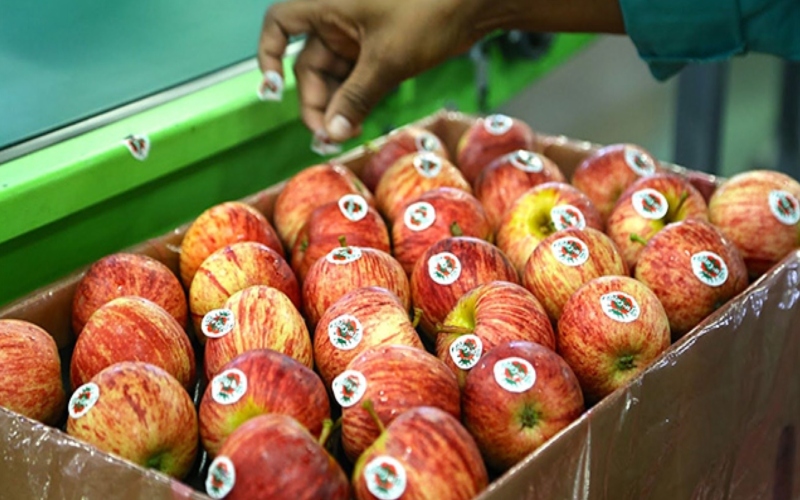Africa’s traditional fermented foods and why we should keep consuming them

Most of the fermented foods are plants that grow on their own in the wild and are often considered weeds in cropped and cultivated land. These include amaranths, Bidens pilosa, cleome and Corchorus species. The increased availability of African indigenous foods could expand the range of commercially available fermented African foods.
Florence Malongane, University of South Africa and Tendaiishe Berejena, University of South Africa
Fermentation is a process where microorganisms like bacteria and yeast work together to break down complex carbohydrates and proteins into simpler, more digestible forms.
The fermentation process not only extends the shelf life of food but also enhances its nutritional content. During fermentation, beneficial microorganisms produce essential vitamins and minerals.
Fermented foods have many benefits and have been shown to reduce inflammation and infections.
As nutrition researchers, we undertook an in-depth assessment of fermented African foods and their potential to improve human health cost-effectively.
By gaining a deeper understanding of the diverse microbiomes present in various fermented indigenous African foods, we aim to enhance human health through targeted dietary interventions.
Going back in history
Fermentation as a preservation method can be traced back a long way.
In the Middle East, between 1,000 and 15,000 years ago, people moved from foraging and hunting to organised food cultivation and production.
Evidence of the alcoholic fermentation of barley into beer and grapes into wine dates back to between 2000 and 4000 BC.
In the Middle East and the Indian subcontinent, milk was fermented to create yoghurt and other sweet and savoury fermented milks. White cabbage pickles and fermented olives are very popular in the Middle East.
In India and the Philippines, rice flour was fermented to produce products like noodles.
Africa’s traditions
In Africa, fermented foods hold great cultural significance and health benefits, yet this topic has not been thoroughly researched.
Foods are mostly fermented at home and trends vary by region.
The primary ingredients in African fermented foods are mainly cereals, tubers and milk.
Most of the fermented foods are plants that grow on their own in the wild and are often considered weeds in cropped and cultivated land. These include amaranths, Bidens pilosa, cleome and Corchorus species. The increased availability of African indigenous foods could expand the range of commercially available fermented African foods.
While some products like marula beer have entered the commercial market, the overall consumption of fermented foods among Africans has declined.
This drop is largely due to the widespread availability of refrigeration systems and a growing loss of interest in traditional African foods.
Improving health in Africa
Fermented root plants such as cassava and yam have been shown to decrease creatinine levels, which may indicate enhanced renal function and kidney health. This suggests that the fermentation process not only enriches these root plants with probiotics but also promotes better physiological responses in the body.
Among the diverse array of fruits native to Africa, baobab and marula are the most popular fermented fruits. Fermenting them enhances their protein and fibre content. Consuming fermented baobab fruits has been shown to reduce the activity of α-amylase, an enzyme that may have implications for regulating blood sugar.
Millet, maize, African rice and sorghum are the most fermented grains in Africa. When these foods are fermented, they can help reduce blood glucose levels, serum triglycerides and cholesterol.
Amahewu is a traditional beverage produced through the fermentation of sorghum or maize, mostly enjoyed in South Africa and Zimbabwe for its tangy flavour and smooth texture.
In Kenya, a similar fermented cereal beverage known as uji is made of millet and flavoured with milk, adding to its rich and nutritious profile.
Ghana boasts its own version called akasa, which is prepared from a combination of sorghum, corn and millet and known for its unique taste and cultural significance.
In Sudan, the beverage referred to as abreh varies in preparation but shares the same essence of fermentation, while in Nigeria, ogi is another fermented cereal paste, from similar small grains like sorghum and millet, which produce a creamy beverage.
Fermenting sorghum and millet provides essential nutrients and supports metabolic health and gut function.
In Nigeria, fermented cereal beverages are widely used to control diarrhoea in young children.
Sour milk is the most fermented food in Africa, celebrated for its rich flavour and numerous health benefits.
During the fermentation process, bacteria convert the milk sugar, called lactose, into lactic acid.
Kulenaoto, a traditional fermented milk drink enjoyed in Kenya, is known for its creamy texture and slightly tangy flavour. South Africa produces sour milk known as amasi. Nigeria and Togo share a common fermented dairy product known as wara, which is made from fermented soybeans and is often served as a snack.
In Ghana, nyamie is a rich, thick yoghurt-like product. In Cameroon, pendidam is a unique fermented milk product that is cherished for its distinctive taste and nutritional benefits, making it a staple in many households.
Regular consumption of fermented sour milk can play a significant role in weight management, decreasing visceral (gut) fat, which is a risk factor for cardiovascular diseases.
Moreover, fermented milk offers valuable protection against folate deficiency.
Looking forward
African fermented foods could be the easiest and least expensive way of introducing beneficial microbes to the gastrointestinal tract, replacing expensive pharmaceutical probiotics.
These processes should be encouraged, and younger generations need to be exposed to the benefits of these traditions.
Vanishing plants could be preserved and distributed through seed banks.
The Conversation
Florence Malongane, Senior lecturer, University of South Africa and Tendaiishe Berejena, Public Health Nutrition Researcher, University of South Africa
This article is republished from The Conversation under a Creative Commons license. Read the original article.
Top Stories Today












































